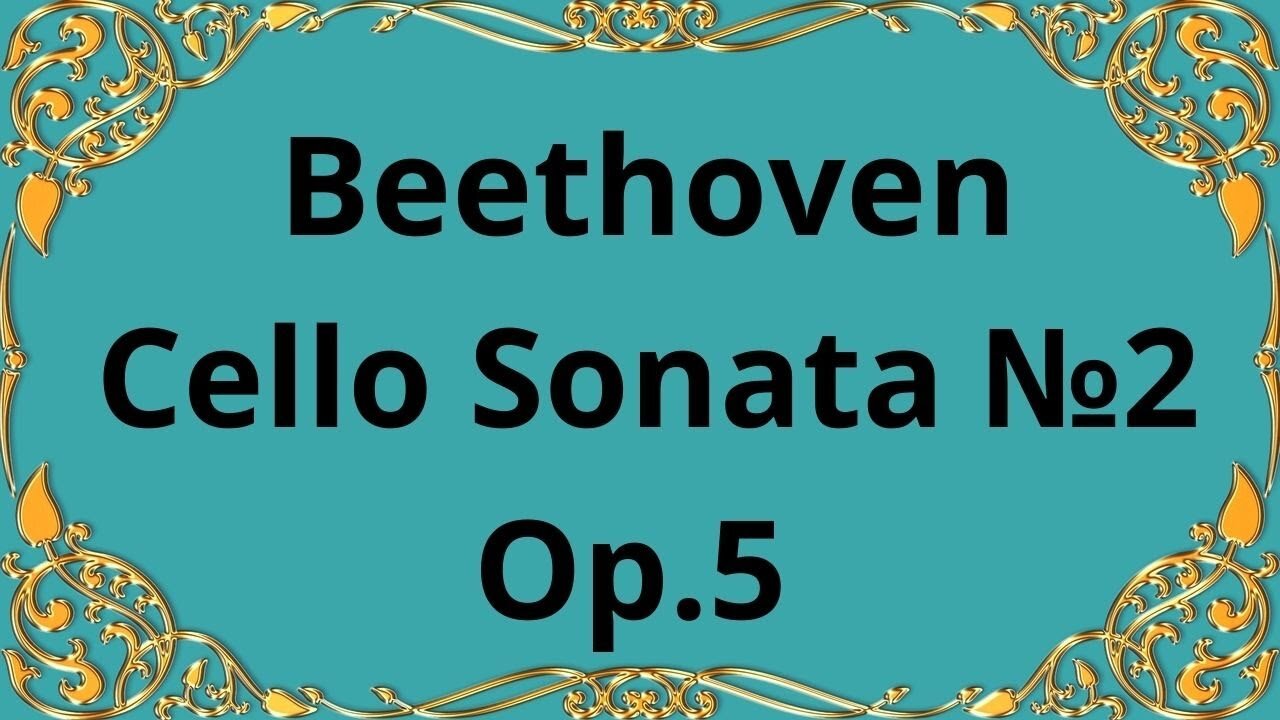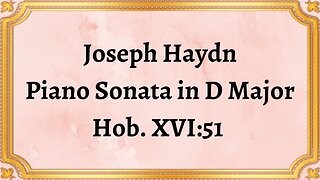Premium Only Content

Beethoven Cello Sonata №2, Op.5
#Beethoven #Cello_Sonata#classical_music
Ludwig van Beethoven's Cello Sonata No. 2, Op. 5, is a groundbreaking work in the history of classical music, showcasing the composer's innovative style and virtuosic writing for cello and piano. Composed in 1796, the Cello Sonata No. 2 is a significant step forward in the development of the cello as a solo instrument.
The Cello Sonata No. 2 is divided into three movements: Adagio sostenuto - Allegro, Rondo - Allegro molto, and Adagio - Allegro vivace. The opening Adagio sostenuto - Allegro is a bold and dramatic movement, featuring a sweeping and melodic cello line that is supported by the piano. The Rondo - Allegro molto that follows is a lively and energetic movement, featuring a fast and playful cello melody that is accompanied by the piano. The final Adagio - Allegro vivace is a powerful and emotional movement, featuring a soulful and poignant cello melody that is complemented by the piano.
One of the most striking features of the Cello Sonata No. 2 is the way in which Beethoven pushes the boundaries of traditional classical music. The piece features unexpected modulations and harmonies, sudden changes in dynamics and tempo, and complex rhythmic patterns that were groundbreaking for their time. Beethoven's use of these techniques adds a sense of drama and excitement to the piece, and his masterful writing for cello and piano showcases the unique capabilities of each instrument.
Another notable aspect of the Cello Sonata No. 2 is the way in which Beethoven elevates the cello to a solo instrument, rather than relegating it to a supporting role. The cello part is virtuosic and demanding, requiring a high level of skill and musicianship from the performer. Beethoven's writing for the piano is equally impressive, with the instrument providing a rich and complex harmonic framework that complements the cello.
The Cello Sonata No. 2 also showcases Beethoven's mastery of musical form. The first and final movements follow a traditional sonata form, with an exposition, development, and recapitulation. The second movement follows a simpler rondo form, with a recurring theme that is interspersed with different episodes. Beethoven's use of form in the Cello Sonata No. 2 is masterful, creating a cohesive and compelling musical narrative.
Overall, the Cello Sonata No. 2, Op. 5, is a groundbreaking work in the history of classical music, showcasing Beethoven's innovative style and exceptional skill. Its daring harmonies, complex rhythms, and virtuosic writing for cello and piano make it a beloved and enduring work in the cello and piano repertoire. The Cello Sonata No. 2 is a testament to Beethoven's enduring legacy as one of the greatest composers in the history of classical music.
-
 6:07
6:07
Classical music_Music Inspiration
1 month agoJoseph Haydn Piano Sonata in D Major, Hob. XVI:51
1001 -
 53:13
53:13
BonginoReport
3 hours agoJFK Files Drop (Ep.163) - 03/19/2025
40.4K160 -
![🔴[LIVE TRADING] Market Open: Fed Interest Rate Decision Day || The MK Show](https://1a-1791.com/video/fww1/0f/s8/1/w/q/e/u/wqeuy.0kob-small-The-MK-Show-Mar.-19th.jpg) LIVE
LIVE
Matt Kohrs
12 hours ago🔴[LIVE TRADING] Market Open: Fed Interest Rate Decision Day || The MK Show
1,391 watching -
 DVR
DVR
Dear America
9 hours agoSHOCKING JFK Files Revelations + Harry Sisson In Trouble & Elon Saves Stranded Astronauts!
39.9K6 -

Randi Hipper
45 minutes agoBREAKING BITCOIN NEWS!
-
 LIVE
LIVE
Wendy Bell Radio
5 hours agoWELCOME HOME
10,082 watching -
 16:10
16:10
T-SPLY
3 hours agoElon Musk Is Still Being Attacked After Saving Stranded Astronauts
617 -
 13:31
13:31
IsaacButterfield
5 hours ago $0.06 earnedFaking Down Syndrome For OnlyFans: DISGUSTING
6154 -
 4:12
4:12
Kirill MultitoolOfficial
5 hours agoBEST Bushcraft HACKS and Survival SKILLS in the wilderness
301 -
 1:29:41
1:29:41
JULIE GREEN MINISTRIES
3 hours agoLIVE WITH JULIE
130K162